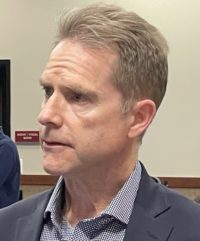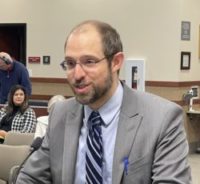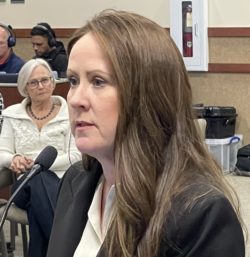But at this week’s Board meeting, stakeholders from management and labor staked their positions both for how the new regulation will proceed and how the coming permanent airborne infectious disease standard for general industry will look.

The Board, as expected, approved the standard in a 6-1 vote. Management representative Kathleen Crawford voted no, and other members voted yes but took their time deciding on their ultimate vote. “We’ll be smarter next time,” Board Chair David Thomas commented, referring to the permanent standard.
He acknowledged the criticisms of the proposal but added, “What we have here is probably the most workable … document we have to protect ourselves.”
Division of Occupational Safety and Health Chief Jeff Killip said the regulation makes a “vast improvement in Cal/OSHA’s ability to protect workers, especially in high-risk occupations.” He added that “general requirements,” namely, the Injury and Illness Prevention Program, which employer representatives insist is a better alternative to prescriptive requirements to control COVID, “were substantially less protective than the emergency regulations. It is imperative to keep key worker protections in place as COVID and its continuously emerging variants continue to be a serious occupational and community hazard.”
California’s Office of Administrative Law has 30 days to approve the non-emergency regulation, meaning there is a chance that it will not be finalized by the first of the new year. DOSH Deputy Chief for Health Eric Berg said the current ETS will be in place until the effective date of the latest version.
Just Vote No

Employer representatives urged the Board to reject the non-emergency standard, although they realized the effort was futile. Rob Moutrie, legislative advocate for the California Chamber of Commerce, noted, “We have better scientific understanding of the virus than we ever had. Now is the moment to end this.”
Helen Cleary, director of the Phylmar Regulatory Roundtable, echoed those sentiments. “It’s not because we believe COVID is gone or that it is not a concern. It’s not because we have fatigue or we’re just tired of complying.”
She argues that safety professionals are “losing credibility because the requirements do not align with the community.” Cleary adds, “When nonsensical rules are established, employees become less motivated to follow any rules. We’re very concerned that enforcing this rule for two more years is going to chip away at the influence that EHS professionals have built up … throughout this pandemic.”
Cassie Hilaski, safety manager for San Francisco’s Nibbi Brothers Construction, zeroed in on a particular complaint regarding the proposal: the new definition of “close contact,” which is aligned with the California Department of Public Health. Employees in spaces under 400,000 cubic feet per floor are considered a close contact if they share the same airspace with a COVID case for a cumulative 15 minutes over 24 hours.

She echoed Cleary’s comments about the lingering effects of the COVID regulation. “Our employees don’t have a problem following the COVID protocols when they make sense,” Hilaski says. “They don’t like it, but they understand it. They get really upset when they need to wear face masks for 10 days simply because they were on the same floor as a COVID case. They actually see it as a punishment.”
Exclusion Pay, Coming Later?
On the other hand, labor still seethes about the decision to remove exclusion pay from the new regulation. “Some of these decisions come from above, not necessarily where you think,” Thomas commented.
Mitch Steiger, labor advocate for the California Labor Federation, called for exclusion pay to be included in the first draft of the permanent standard. His call was taken up by Standards Board occupational health rep Laura Stock, who asked for a formal motion. Thomas said such a move was too soon because it was separate from the official Board agenda but expect it early in 2023.

